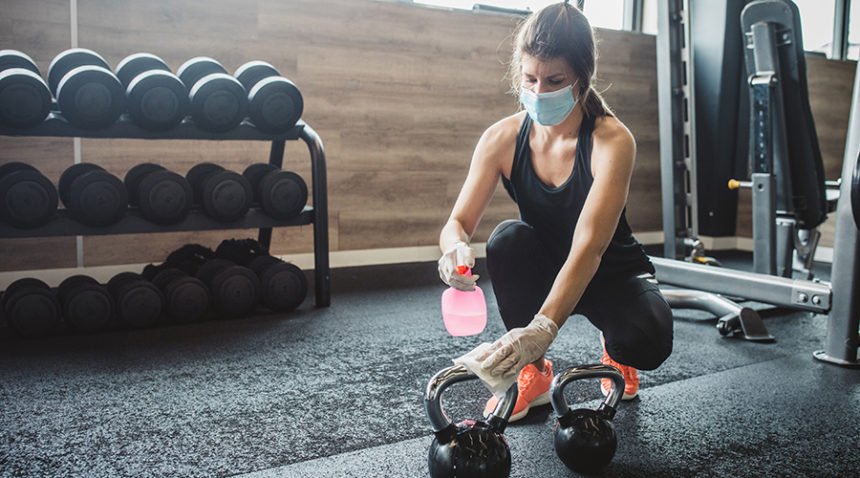Fitness enthusiasts across the country may be eager to resume their indoor workouts as gyms reopen their doors. But is it safe to walk into a gym to pump iron or take a spin class during the coronavirus disease 2019 (COVID-2019) pandemic?
The experts say:
Working out inside in close proximity to others is risky. COVID-19 is spread mainly from person to person by droplets of mucus that are ejected when an infected person coughs, sneezes or talks. When you exercise hard, you breathe heavily, meaning you increase the chances of excreting those droplets onto someone else if you cannot practice physical distancing. One option would be to wear a mask, but not everyone is comfortable doing that while breathing hard.
“One of the challenges with exercising is that it can be difficult to keep a mask on if you’re doing really vigorous exercising,” says Emily Sickbert-Bennett, PhD, director of UNC Medical Center Infection Prevention. “So you don’t have protection.”
You have a lower risk of contracting COVID-19 by exercising outdoors because fresh air dilutes the virus, and you have the space to move more freely and keep distant from others, she says.
Running, biking or walking outside are safer than working out in a gym as long as you are not doing it in a crowd, such as during a race or marathon, says Robert Hutchins, MD, MPH, UNC Health internal medicine physician.
And if you’re out running or walking and see someone else, slow down and let others pass.
“Prepare to go off the sidewalk and into the grass if needed, and have a mask or face covering with you in case you need it for a moment, and then you can take it off once you pass,” says UNC Health pediatrician Elizabeth Blyth, MD.
Factors to consider:
– How big is the gym? Make sure there is enough space that you can stay 6 to 10 feet apart from anyone else to reduce the risk of virus transmission.
– What are the gym’s safety measures and policies, and have those been communicated to members? Gyms should have clear policies about what they are doing to keep you safe and to minimize the risk of spreading the virus. This can include cleaning and disinfecting procedures, wellness screenings and temperature checks, and having the members wear masks when they can’t stay 6 feet apart. Staff should be trained on signs that a member is not feeling well.
– Is anyone in your household at high risk for coronavirus complications? This group includes people older than 65 and anyone with a serious underlying medical condition, such as diabetes or heart disease. Gyms may not be a good idea if anyone in your household is considered high-risk.
How to stay safe:
Try to find ways to exercise outdoors or at home. If you’re craving group exercise, see if any gyms in your area are offering outdoor classes or fitness boot camps.
If you really want to work out indoors, practice physical distancing or wear a mask if you cannot stay at least 6 feet apart. If you’re attending a group fitness class indoors, arrive just in time for your class and leave right after; don’t spend extra time in the waiting area or locker rooms. If you’re touching shared equipment, such as weights, be sure to wipe them down with a disinfectant before and after use.
“Carry around a small bottle of sanitizer to use frequently,” Dr. Hutchins says.
If possible, wash your hands thoroughly when you are done working out and again when you get home. Avoid gyms in areas that have an especially high COVID-19 rate or have seen a recent spike in cases. Take a reusable water bottle, and do not use your gym’s water fountains.
For the latest information on COVID-19, visit the CDC website and the UNC Health COVID-19 Resources page, and follow UNC Health on Twitter, Facebook, Instagram and YouTube.

